|
THE WAR. YEARS IN DROMORE
Commemorative programmes about the Belfast
Blitz of fifty years ago, sparked off some discussion in
committee, as to the rescue work performed by Dromore people
on that occasion. We have heard that some of you helped with
the ambulance service, while others accepted evacuees into
their homes, but to date, material on the subject has been
rather thin on the ground. So if you have any items of
interest, or original stories relating to that period, the
journal committee would love to hear from you.
In the meantime, we offer for your perusal,
(2) an article by Mary Cardwell on the St. John's Ambulance
Brigade, Dromore and (1) a chapter from Trefor Vaughan's new
novel "A Season of Lamplight" published by Tabb House. It is
an adventure story set in the Is landderry - Coolsallagh
area of Dromore during the early days of the Second World
War. Apart from enjoying the tale, Dromore readers have the
added entertainment of deciding, which, if any, of his
characters were based on local folk.
In the following poignant extract Trefor ably
expresses the feelings of a young boy suffering separation
from his parents due to the circumstances of war.
THE EVACUEE
ARTHUR looked round at his new bedroom. A big, long window
faced south, across a landscape of fields and wooded hills.
In the adjacent wall was set an intriguing round window,
almost covered by virginia creeper through which light
streamed in a deep green glow. The room was solidly
furnished in a Victorian style, with a mahogany
writing-table below the main window.
He was alone. He sat
on the bed and pulled out a bit of string. With practised
speed he began to crochet it between his fingers. 'I will
not cry,' he told himself. 'They must not see me crying.
Anyway what is there to cry about? It will be just as though
the holiday was going on and on. How lovely. I'll be able to
gather blackberries again all up the roadbanks of Summerhill.
While Jim and Nick and the gang are kicking their shoes
along the Kensington Road on their way to school.' He looked
up through the window at the distant hills. 'I suppose they
will send me to a school here ... what an odd idea, a school
in the middle of the fields . . .' A
wave of desolation swept over him. He stopped crocheting and
clenched his fists, fighting away the tears. 'I don't want
to go to a strange school on my own,' he though. 'I don't
want them to go away.' His mother was leaving tomorrow, and
his father on Monday. But then, he remembered, 'Daddy's
taking me to Newcastle tomorrow, as well.' His spirits
lifted briefly. The seaside! Seaweed and sun and the bright
crash of waves and his striped swimming suit and the cold
rush of the sea and the sand running out between his toes
... If it didn't rain. His mother
would be gone when he got back. And his father would be gone
on Monday. He looked round him again
at the room, the big window, the little green-lit window,
the heavy furnishings. He picked up the string and began to
crochet again more slowly. How long, he asked himself, does
a war last? The door opened and his
father came in. He crossed the room and sat down quietly
beside Arthur on the bed. Faintly from the wireless in the
sitting-room downstairs, a girl's voice floated gently
upwards in the sad cadences of an impossible dream:
"Somewhere over the rainbow Way up high
Birds fly over the rainbow Why then, O why can't I?"
Someone must have left the sitting-room door
open. Arthur's head drooped slowly onto his chest and he
began to sob. John Oakley fumbled in his pocket and brought
out a big white handkerchief. He handed it to Arthur, who
slowly wiped his eyes with it and turned his face to look
away out through the big window. A hazy tumble of little
hills and woods interspersed with the green and gold of
harvest time lay quietly under the early morning sunlight.
His father began to speak to him gently. It wouldn't be for
long. They would both come over to see him at Christmas.
There were many new things to be learned in
the country. And there was his new friend Peter, almost his
own age, who lived in the farm just up the road.
Arthur remained uncomforted. At last he
looked down and said, very quietly "You're going away and
you haven't given me anything ... I haven't anything to keep
. . ." John Oakley searched in his
pocket. He brought out a handful of change. He looked at
Arthur, who was now moodily drawing a pattern on the
window-pane with his fingertip. Then he carefully selected a
coin and put the rest back in his pocket.
"Here then, I know you don't want money,
because I've already given you some. Here's something to
keep." Arthur took it and looked at
it. It was a bright new Eire halfpenny with a pig on it. He
clutched it tightly and afterwards kept it safely and in
secret, transferring it to his pyjamas pocket every night.
At first it was a stab of pain, then it became a comfort in
pain, and at last a hope. His father would come back.
He thought of his mother far less often, and
when he did, he quickly turned his thoughts to something
else.

ST. JOHN'S AMBULANCE BRIGADE, DROMORE
1938 - 1946 by MARY CARDWELL FORMATION & TRAINING
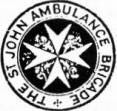 A
St. John's Ambulance Brigade Unit was formed in Dromore just
before the Second World War. The Ambulance Division (men)
was first registered on 28th May 1938, and the Nursing
Division (women) on 22nd August 1938. The Ambulance Division
was under the leadership of Mr. John Murphy. Mrs. Florence
Wilson was in charge of the Nursing Division until 1944 and
Miss Hannh Hobart thereafter. In 1943 Amy Silcock and Lila
Beattie started a junior branch of Nursing Cadets. A
St. John's Ambulance Brigade Unit was formed in Dromore just
before the Second World War. The Ambulance Division (men)
was first registered on 28th May 1938, and the Nursing
Division (women) on 22nd August 1938. The Ambulance Division
was under the leadership of Mr. John Murphy. Mrs. Florence
Wilson was in charge of the Nursing Division until 1944 and
Miss Hannh Hobart thereafter. In 1943 Amy Silcock and Lila
Beattie started a junior branch of Nursing Cadets. Dr.
Wilson, a local GP, who was Divisional Surgeon gave lectures
on First Aid, Hygiene and Home Nursing to both men and women
in Banbridge Road Lecture Hall. Members also practised
bandaging, using both triangular and roller bandages, and
learnt how to carry a stretcher in such a way as to avoid
the risk of further injury to the patient. Examinations for
certificates in these subjects were conducted by doctors
from other areas, including Dr. McCandless of Hillsborough.
The men were expected to participate in the Home Nursing as
the Brigade Standing Orders make clear; ". . every male
member is to be encouraged to obtain the home nursing
certificate of the St. John's Ambulance Association. . ." 1
However it would appear that the women were not expected to
carry stretchers, but to commandeer amateur assistance if
the need arose; "Women should receive sufficient
instruction in stretcher drill to enable them to instruct
the uninitiated in loading and unloading a stretcher and
removing a patient." 1 OUTBREAK OF WAR
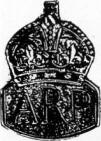 When
it became clear that war was imminent, and preparations were
being made, some of the members of the St. John's Ambulance
Brigade also joined the Civil Defence or Air Raid Precaution
Unit, organised by John Murphy and meeting at his premises
in Bridge Street. They wore the same uniform with the
addition of a 'CIVIL DEFENCE' armband and helmet. Some of
the women became members of the Civil Nursing Reserve. When
it became clear that war was imminent, and preparations were
being made, some of the members of the St. John's Ambulance
Brigade also joined the Civil Defence or Air Raid Precaution
Unit, organised by John Murphy and meeting at his premises
in Bridge Street. They wore the same uniform with the
addition of a 'CIVIL DEFENCE' armband and helmet. Some of
the women became members of the Civil Nursing Reserve.
Everyone was issued with a gas mask and courses in how to
cope with gas attacks formed part of the ARP training. They
covered not only precautions to be taken, but also the
treatment of victims, including those whose injuries might
interfere with the proper wearing of their masks.
Sheds at the back of Bridge Street were used to practice
rescue work, using ropes to lower people and stretchers from
the upstairs windows. In addition the Unit took part in
'exercises', in Dromore, or further afield. Transport to
these depended on the few people who had a car available and
was made even more difficult by the blackout. On one
occasion Mr. John McGrehan was in a group who were being
driven to an exercise in Lisburn by Mr. McAllister, a local
schoolmaster. He decided to 'dribble' behind a red light
showing on a vehicle in front. Unfortunately this turned out
to be a (very slow-moving) horse-drawn bread cart!
Although Dromore did not have any air raid shelters there
were local Air Raid Wardens. When the Siren sounded ARP
personnel reported to John Murphy's in Bridge Street. The
siren went in Dromore on several occasions, but the only
bomb to fall in the area came down
at Sylvan Hill. The bomber was seen releasing the bomb as it
passed overhead at Gribben's Hill, the momentum carrying it
on some distance before landing.

The BLITZ
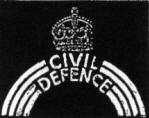 In
spite of warnings from the German propaganda broadcaster
Lord Haw Haw, the possibility that Belfast would be bombed
does not seem to have been taken seriously by the
authorities. However on Easter Tuesday 1941 the full horror
of the 'Blitz' came to Belfast. The sirens had sounded about
10.40 but it was another half hour before the approaching
bombers were heard over Carlingford Lough and soon flying
over Dromore. In
spite of warnings from the German propaganda broadcaster
Lord Haw Haw, the possibility that Belfast would be bombed
does not seem to have been taken seriously by the
authorities. However on Easter Tuesday 1941 the full horror
of the 'Blitz' came to Belfast. The sirens had sounded about
10.40 but it was another half hour before the approaching
bombers were heard over Carlingford Lough and soon flying
over Dromore.
"Minutes later, in the old cathedral city of Dromore, Co.
Down, people thronged onto the streets to listen to the
convoy passing over in ominously large numbers. Stumbling in
the moonlight, some scrambled up the adjacent low-lying
hills to gaze helplessly and expectantly in the direction of
Belfast." 2
The falling bombs and the fires in the city were visible
from Dromore and the surrounding countryside. Mr. Jim
Hawthorn watched from Barban Hill, seeing the flash of the
bombs landing, followed after short time by the bang of the
explosion.
"In Dromore, Co. Down, people, stunned and tense, watched
for a time the great glow in the night sky, before making
their way back to their homes, 'wondering what had taken
place and what news (they) would hear when morning came'." 2
The Dromore Ambulance Unit was called to Belfast the
following day. An ambulance crew consisting of Willy Moore
(driver), John McGrehan, Jim Hawthorn, Sammy Murdoch, Carson
Cardwell, Maggie Fairley and Mollie McCalister travelled to
Belfast to help with the rescue operations. Through slits in
the canvas-covered the sides of their vehicle they glimpsed
wrecked buildings and people clutching suitcases trying to
make their way out of the city.
When they reported to Victoria Square they found utter
chaos. Their task was to relieve the regular ambulance
service, mainly in the evacuation of the sick and elderly to
places of safety. The party was divided up, answering calls
as required. One call was to evacuate a
woman suffering from Rheumatic fever. Another was to York
Road Railway Station where the crowds of people trying to
flee the city were so dense that the stretcher party found
great difficulty getting through with their patient. In the
confusion it was not always clear just what kind of help was
needed. One of the women was sent in answer to a request for
'a nurse'. Fortunately she asked one of the men, who was not
on a call at the time, to accompany her in the ambulance as
the task turned out to involve the removal of an elderly,
infirm man from an upstairs room - a job for a rescue team
rather than a nurse.
On the way home that evening their vehicle became an
unoffical bus. Public transport was completely disrupted so
when the crew spied a Dromore family waiting at the bus stop
at Smithfield in Lisburn they offered them a lift. Other
people who set out to walk to Hillsborough and Banbridge
were picked up en route.
For a time after the blitz some people left Dromore each
night to stay in what they hoped was the greater safety of
the countryside and people in Belfast also evacuated their
families, many of them coming to the Dromore area:
The NURSING DIVISION
 The
women of the Nursing Division helped out in various local
hospitals, including the Cowan Heron Cottage Hospital - then
a general hospital. As the war progressed the hard-pressed
London units appealed for assistance to allow their members
a much-needed break, especially over Christmas. The party of
5 which went from Northern Ireland in December 1944 included
one of the Dromore Division. They spent the next fortnight
working 12-hour shifts every night in shelters in
Bermondsey, the dock area of East London. They were assigned
to 4 underground shelters, each accommodating 300 - 1000
persons. The main danger in these underground shelters was
from flooding as a result of bombing rather than directly
from the bombs. The
women of the Nursing Division helped out in various local
hospitals, including the Cowan Heron Cottage Hospital - then
a general hospital. As the war progressed the hard-pressed
London units appealed for assistance to allow their members
a much-needed break, especially over Christmas. The party of
5 which went from Northern Ireland in December 1944 included
one of the Dromore Division. They spent the next fortnight
working 12-hour shifts every night in shelters in
Bermondsey, the dock area of East London. They were assigned
to 4 underground shelters, each accommodating 300 - 1000
persons. The main danger in these underground shelters was
from flooding as a result of bombing rather than directly
from the bombs. Reporting for duty
at 7 p.m. each evening they were taken to the shelters
where, until 7 o'clock the following morning they attended
to the various ills from which the shelter occupants
suffered. Many of these had endured continuous nightly life
in the shelters for over 4 years. At first the party were
appalled by the conditions but after a few nights they
became accustomed to it, finding that shelter life had its
lighter side and in spite of their privations the people
were cheerful and appreciative of their help. One of their
more seasonal duties was assisting in the distribution of
toys, given by Belgian evacuee children, to East End
children who had been rendered homeless by enemy action. 3

DISBANDMENT
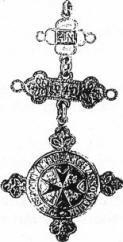 When
the war ended the ARP Unit, being no longer needed, was
disbanded, and a short time after, the St. John's Ambulance
Brigade in Dromore also ceased to function. When
the war ended the ARP Unit, being no longer needed, was
disbanded, and a short time after, the St. John's Ambulance
Brigade in Dromore also ceased to function.
Acknowledgements
I would like to.thank the following people for their
assistance in preparing this article:
Mrs. Amy Brown, Dromore
Mr. Corkey, St. John's Ambulance Brigade HQ, Belfast Mr.
& Mrs. Jim Hawthorn, Newcastle
Mr. John McGrehan, Dromore
Other Sources
1 St. John's Ambulance Brigade Standing Orders
2 'The Blitz: Belfast in the War Years' by Brian Barton
3 The Dromore Weekly Times, January 13th 1945

COWAN HERON HOSPITAL - A GIFT TO THE
PEOPLE OF DROMORE
by ANDREW DOLOUGHAN The Cowan Heron Hospital at Dromore is
a building steeped in history as anyone visiting there will
readily appreciate. As will be gleaned from a plaque above
the entrance door, it was erected in the year 1898 by
William Cowan Heron, D.L., J.P., who in those days had his
home at "Altafort," Skeogh, about three miles from the town.
Below the plaque is a heron and the words "Avec Ma Vie"
(with my blood), and above the door is this quotation from
the Book of the Prophet of Isaiah: "Comfort ye my people,
saith your God." Inside the hospital there is a most
interesting illuminated address which was presented to Mr.
Heron in January, 1891, in appreciation of his gift of a
clock for the tower of the Town Hall. His portrait as
president and founder of the hospital also adorns the walls
of the corridor. The wording on the illuminated address is
couched in the following terms:"Address to William Cowan
Heron, J.P., Maryfield, Holywood, Co. Down, at a banquet in
the Town Hall, Dromore, on the occasion of his presenting
the Township with a town clock: "Dear Sir, - Some months
ago we heard with most agreeable feelings of your intention
to present the town with a clock. There were several reasons
why that announcement gave us pleasure. In the first place,
some years have elapsed since the completion of the building
of our Town Hall and, notwithstanding the powers conferred
on the Town Commissioners, they hesitated and did not carry
out the provisions of the Towns Improvement Act by which at
the expense of the townspeople they could have purchased a
town clock for the use and benefit of the town.
GENEROUS GIFT "Our boundary as a township is small,
and there were a number of pressing improvements connected
with our bridges and footpaths which called for attention,
and in the successful completion of which we were
particularly anxious. Your very generous gift came therefore
most opportunely, and we, the Town Commissioners of Dromore,
representing the ratepayers and inhabitants generally,
desire to publicly acknowledge your liberality, and ask you
to accept this illuminated address, together with our best
thanks. "Your family has been long and honourably
connected with this County, and your handsome gift, while
adding considerably to the appearance of our Town Hall, will
often remind us of the donor, and, as time flies, we hope
long to have the pleasure of seeing you and your brother in
Dromore - near which some of your property is situated, and
your prosperous tenantry reside. "Signed on behalf of
Dromore Town Commissioners, Robert Sprott, J.P., Chairman;
J. B. McConnell, Town Clerk, 15th January, 1891."
Down the years the hospital has been admirably served by
many learned physicians and a dedicated nursing and
ancillary staff. The Sister-in charge at present is Sister
C. Ervine.
 MEMORIAL TO DR. W. J. COWDEN
A plaque records the work of one of the physicians in the
following terms: "In honour of William J. Cowden, M.D.,
M.Ch. (1st honours), L.M., the senior medical officer of
this hospital and for 56 years a practising physician and
surgeon in this parish of Dromore, of which he was medical
officer of the Dromore Dispensary District and medical
officer of health for the Dromore Urban and Rural areas, and
also held other government appointments. "He performed all
the duties relating to his offices with punctuality and
efficiency. He was an apt pupil, a brilliant student of his
University and a physician of great skill and ability, of a
homely and kindly disposition, full of sympathy for the poor
and suffering. He
was a trusted physician, greatly beloved by his patients and
esteemed and respected by everyone. "He possessed the many
noble and inestimable qualities of a true gentleman and was
an honour to the profession of which he was indeed an
ornament. He died full of years and honour on 9th January,
1936. "This tablet is erected to perpetuate his memory by
a few of his former schoolmates, fellow students, grateful
patients and neighbours. "He went about doing good." Dr.
Cowden had his practice at Havelock House, Church Street,
where in later years another local general practitioner, Dr.
Victor J. Sterling, now residing at Newcastle, served the
town and district and the hospital assiduously for many
years. Dr. FRANCIS McKEE There is
a further interesting portrait in the hospital that the late
Dr. Francis McKee, who had his surgery in Princes Street, at
the corner of the Ballynahinch Road. In later years Dr.
John Charles Wilson, J.P., long since deceased, also resided
and practised there, and it will be recalled that the late
Dr. Samuel Thompson and Mr. S. C. Borsado F.R.C.S., also had
surgeries there. The area has been known as "The Doctor's
Corner" for the greater part of the present century. The
portrait of Dr. McKee bears this inscription: "Francis
McKee, M.B., F.R.C.S., J.P. Obituary 10th March, 1918. This
portrait and a bed were presented to the Cowan Heron Cottage
Hospital by Dr. McKee's friends as a memorial of his
services as an honorary surgeon from the opening of the
hospital in 1900 to 1915, when he went on active service as
a surgeon in the Royal Army Medical Corps." Dr. Wilson's
work for the hospital is perpetuated by a charming day room
erected to his memory and in which a plaque bears this
testimony to his services: "This room has been named the
Wilson Room in memory of John Charles Wilson, M.B., J.P., a
beloved physician who cared greatly for this hospital and
served it faithfully for many years. November, 1968."

SUCCESSIVE G.P.'S Over the years successive general
practitioners in the town have taken a practical interest in
the work of the hospital, bestowing care and attention on
patients needing their help. In addition to those already
named we must not overlook Dr. Samuel B. Carlisle and his
son, also named Samuel B. Carlisle. Both have long since
gone to their reward. They not only resided at Church
Square, but had their surgery there. There was also Dr.
Thomas Forsythe, who had his surgery at Bedeque House in
Gallows Street, and who now resides at Mossvale. More
recently we had Dr. Kenneth Patterson, who was responsible
for building the present group surgery premises in Gallows
Street, and who is now an ordained minister in the
Presbyterian Church. He began his practice in the former
surgery at Church Square, where the Carlisles practised.
For a short time we had Dr. Ruth Ingram and Dr. James
Armstrong helping out locally, and to-day we are served by
Dr. R. A. McNeice, Dr. C. J. Kenny and Dr. Eileen Aitchinson,
with assistance pro tem from Dr. Elaine Close. "One of the
finest cottage hospitals in Great Britain." So the Cowan
Heron Hospital was described at the time of its opening in
1900, and it's good to see the splendid use being made of it
at the present time as a geriatric unit - a place where the
elderly are cared for with such love and devotation. Long
May it continue. AUTOGRAPHIC ALBUM
Preserved in the hospital to-day is a
beautifully-illuminated album which was presented to Mr.
Heron and the address in which is couched in the following
terms: "Dear Sir, We a number of your friends and
supporters during the late contested election for a County
Councillor in the Dromore Division of Co. Down, take
advantage of this, the opening of the Cowan Heron Cottage
Hospital, to present you with your portrait as a token of
our respect and esteem. "Whilst this was the primary cause
of our action, we had also the remembrance of your many
generous and benevolent acts to the people of this town and
neighbourhood. "Your undoubted liberality in providing
this and the surrounding district with one of the finest
Cottage Hospitals in Great Britian adds yet another to your
many deeds of kindness, and places the people under a deep
debt of gratitude to you. "In asking your acceptance of
this portrait and autographic album, we trust and pray that
you may be long spared to come amongst us; and we know the
only reward you seek is the assurance that the sufferings of
many will be alleviated in this Hospital, which will remain
to future generations a memorial to your philanthropy. "We
are, dear Sir, your sincere well-wishers - J. R. Miniss,
chairman; John Mulligan, bon. treasurer; Robert J. Hunter,
bon. secretary. June 7th, 1900." Regrettably, space does
not permit mention of the long list of signatures to the
album.
 FOUNDER'S
DEATH At the time
of Mr. Herons death in June, 1917, the Hospital Committee
confined their business to paying tributes to its president
and founder, coupled with expressions of regret at the news
of his death. A resolution expressing their deep sense of
loss revealed that Mr. Heron had founded the hospital at a
cost of �7,000 and subsequently provided Railway and Harbour
Stock as a free gift, producing an annual income at that
time of �205 towards yearly maintenance of the institution.
He also from year to year personally expended large sums for
improving and repairing the hospital buildings. Not only did
he do all these things, but he spared neither time nor
trouble in giving the benefit of his great business acumen
in carrying on the hospital work.
Footnote-At the time of writing two public meetings have
been held and an investigating committee appointed, and
signatures are being sought to a petition registering
emphatic opposition to any plans to downgrade, close or
privatise the hospital.
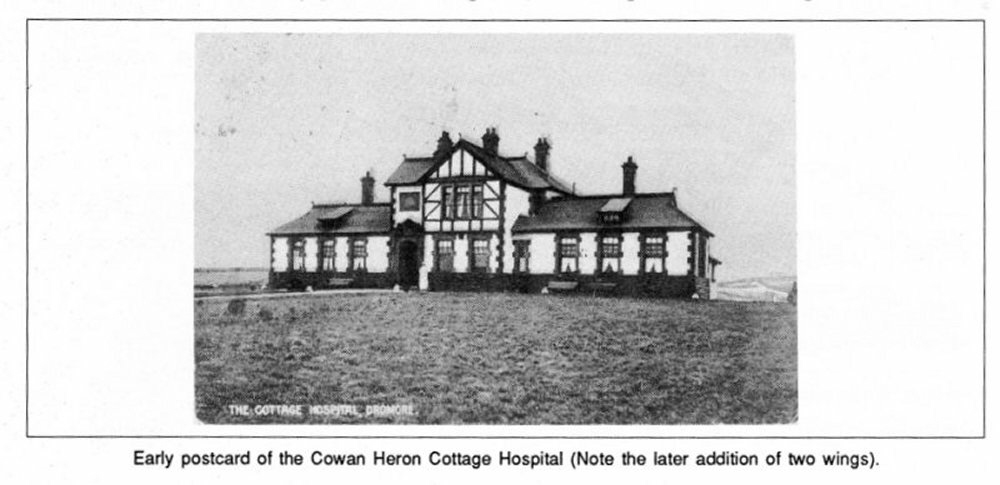
 |